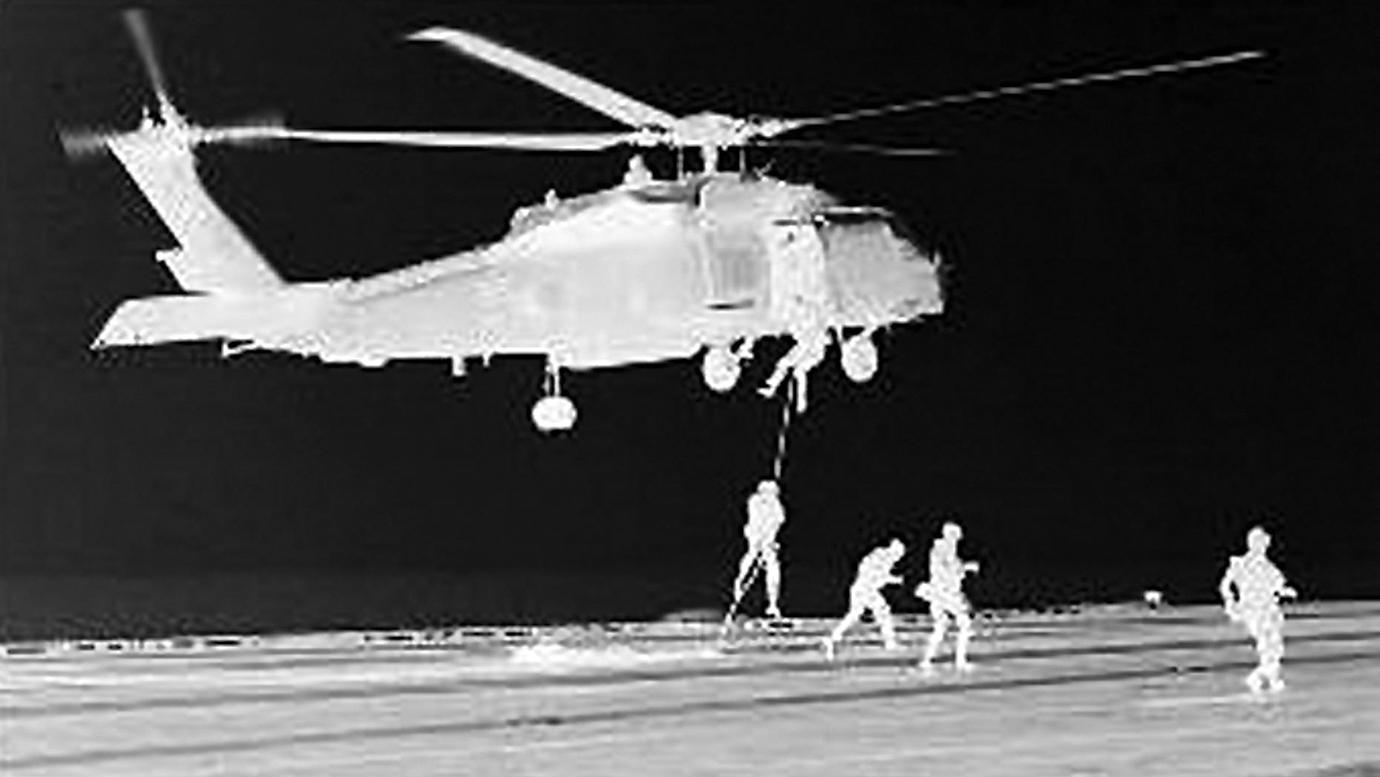Opinion: When U.S. Joint Operations Came Into Their Own

The U.S. invasion of Panama in 1989 was the dawn of large-scale American military night operations with joint forces incorporating both special operations and conventional forces. It was the largest airborne parachute operation since World War II and the first major U.S. combat operation since the Vietnam War.
The aim of Operation Just Cause was to overwhelm the defenders with a swift night attack so they would surrender, minimizing casualties. Then-Gen. Manuel Noriega, de facto leader of Panama at the time, had been indicted in the U.S. for drug trafficking, and he had also ousted a democratically elected government the U.S. sought to restore to power.
The plan for the Panama invasion aimed to exploit the U.S. advantage in night operations by having U.S. Army Rangers seize two airfields occupied by Panamanian Defense Forces (PDF) while U.S. Navy SEALs seized a third. All met opposition, and the SEALs took heavy casualties as they attacked one airfield and damaged Noriega’s Learjet there.
Army Rangers arrived in Lockheed C-130s and C-141s 1 hr. after midnight on Dec. 20, 1989, to seize two airports while under rifle and machine gun fire as Lockheed AC-130 gunships circled overhead to knock out the few anti-aircraft guns there.
At Rio Hato Airfield, two Lockheed F-117 stealth fighters dropped bombs near PDF barracks to stun but not kill the soldiers inside right before the Rangers landed and subdued Panamanian forces there.
More than 700 Rangers who parachuted into Omar Torrijos International Airport and Tocumen Military Airfield, a civil/military facility, were soon involved in a firefight and hand-to-hand combat in the civilian airport terminal. When C-141s carrying the lead elements of an 82nd Airborne Division brigade started parachuting in, things were not working as planned. An ice storm at Pope AFB in North Carolina had delayed the launch of the C-141s carrying more than 2,000 parachute infantrymen, and they did not arrive all at once. Tracers were lighting up the night as C-141s approached Torrijos and some veered away from the runway.
Don Butler was a private in the 82nd artillery battery who jumped at Torrijos, where he landed in a tree and had to let himself down into 10-ft.-high elephant grass. In March of this year, Butler wrote a letter to the editor of this magazine (AW&ST March 27-April 9, p. 5) pointing out the error in the main article I wrote about the operation just after it took place (AW&ST Jan. 1, 1990, p. 30). He noted that the highly detailed story stated incorrectly that no vehicles had been parachuted in as part of the operation. Butler said four of the battery’s 105mm howitzers were dropped in the marsh along with Humvees to tow them. The vehicles were lifted out by Sikorsky Black Hawk helicopters. Plenty of other vehicles were parachuted in as well, including several M551 Sheridan tanks.
The plan of engagement for soldiers of the 82nd Airborne Division was to assemble quickly on the airfield, board helicopters or vehicles and launch night attacks against three key PDF strongholds. It took longer for the paratroopers to assemble than planned, and some of the attacks occurred in daylight, with helicopters being shot up.
Then-Capt. David D. Hollands, commander of the battery, did manage to hook up two of his battery’s 105mm howitzers to Humvees so he could support U.S. attacks. Operation Just Cause was not an artillery battle. Howitzers became key when Hollands later served in Afghanistan and Iraq.
Many lessons learned from Operation Urgent Fury in Grenada in 1983 helped Just Cause. The Navy, Marines, Army, Air Force and special forces units involved in Grenada often were unable to communicate with each other. But they were able to do so effectively in Just Cause, and liaison officers were sprinkled throughout the units involved. A cheat sheet made it easy to establish radio contact with any unit.
Then-Lt. Gen. Carl W. Stiner, commander of Joint Task Force South and operational commander of the Operation Just Cause forces, said after the operation: “We’ve come a long way in joint operations, where we understand each other’s capabilities better and we function better as a joint team.” He also noted that the Panama operation “was a joint planning effort from the beginning, and we got very clear guidance from the Joint Chiefs of Staff,” maximizing the potential of both special operations and conventional forces. That proved to be valuable experience when the U.S. launched Operation Desert Shield eight months later in response to Iraq’s invasion of Kuwait.
David Hughes was Aviation Week & Space Technology’s Boston bureau chief in 1987-96, managing editor in 1996-2002 and a senior editor covering avionics and air traffic control in 2002-09.
The views expressed are not necessarily those of Aviation Week.




